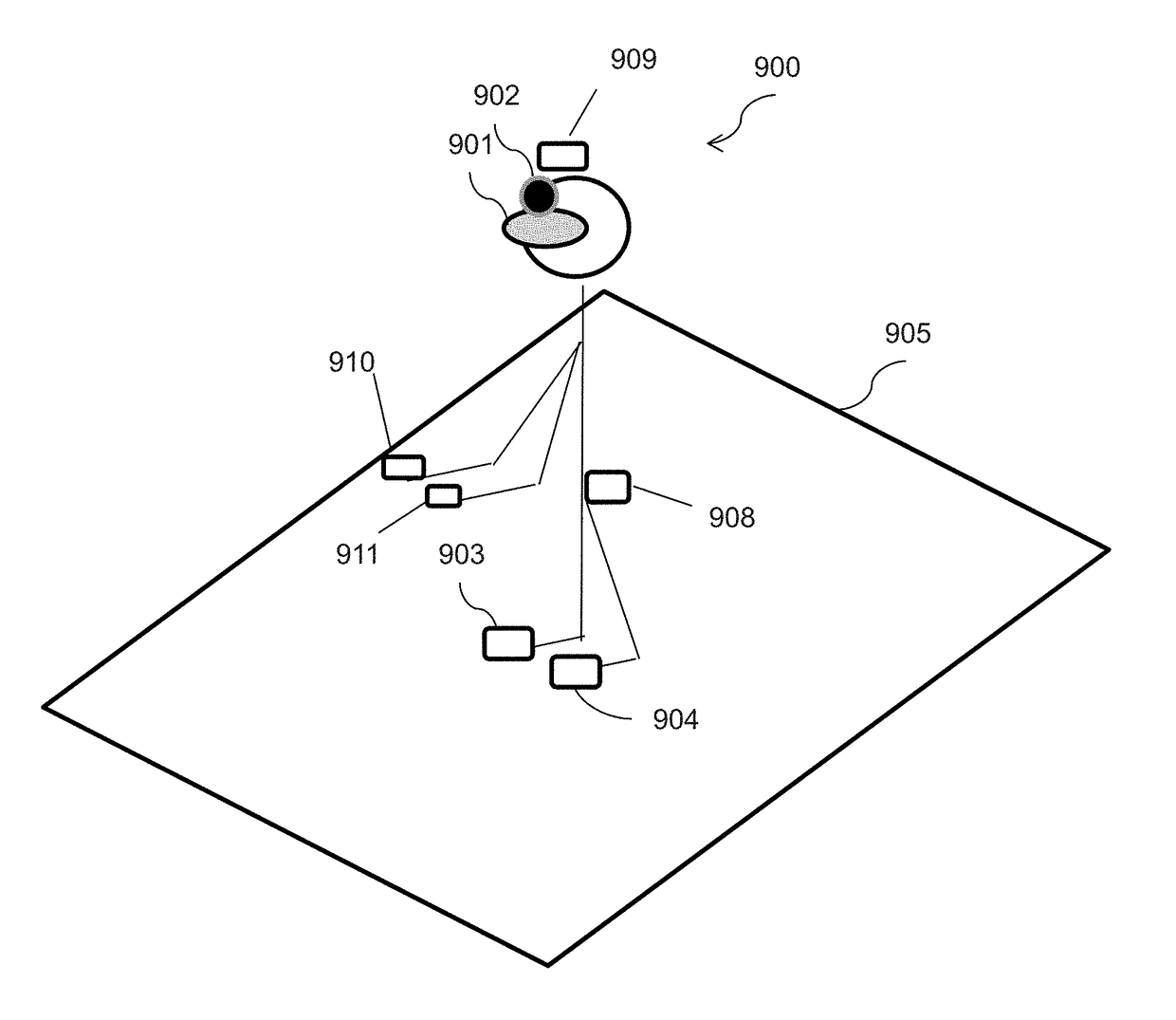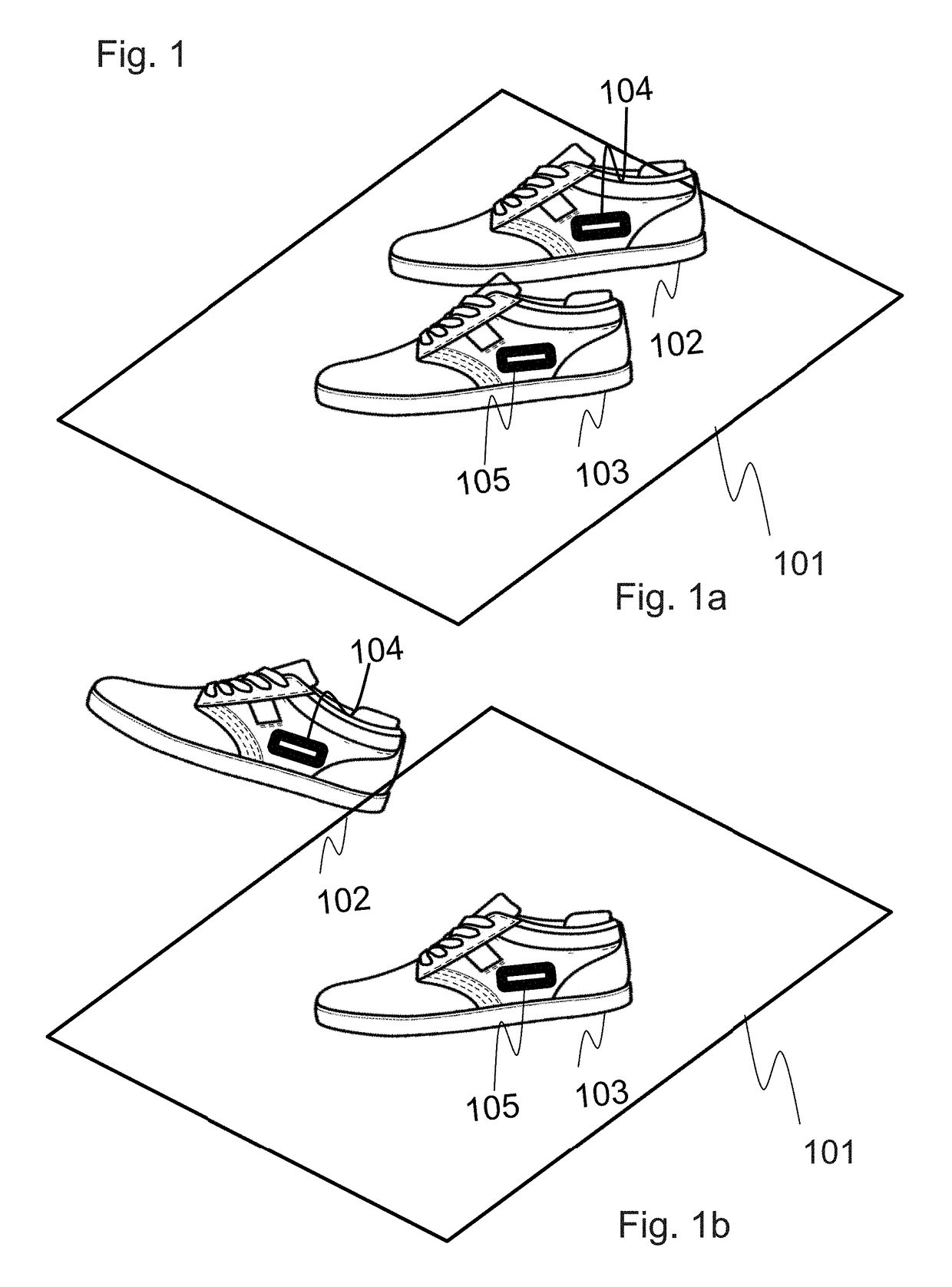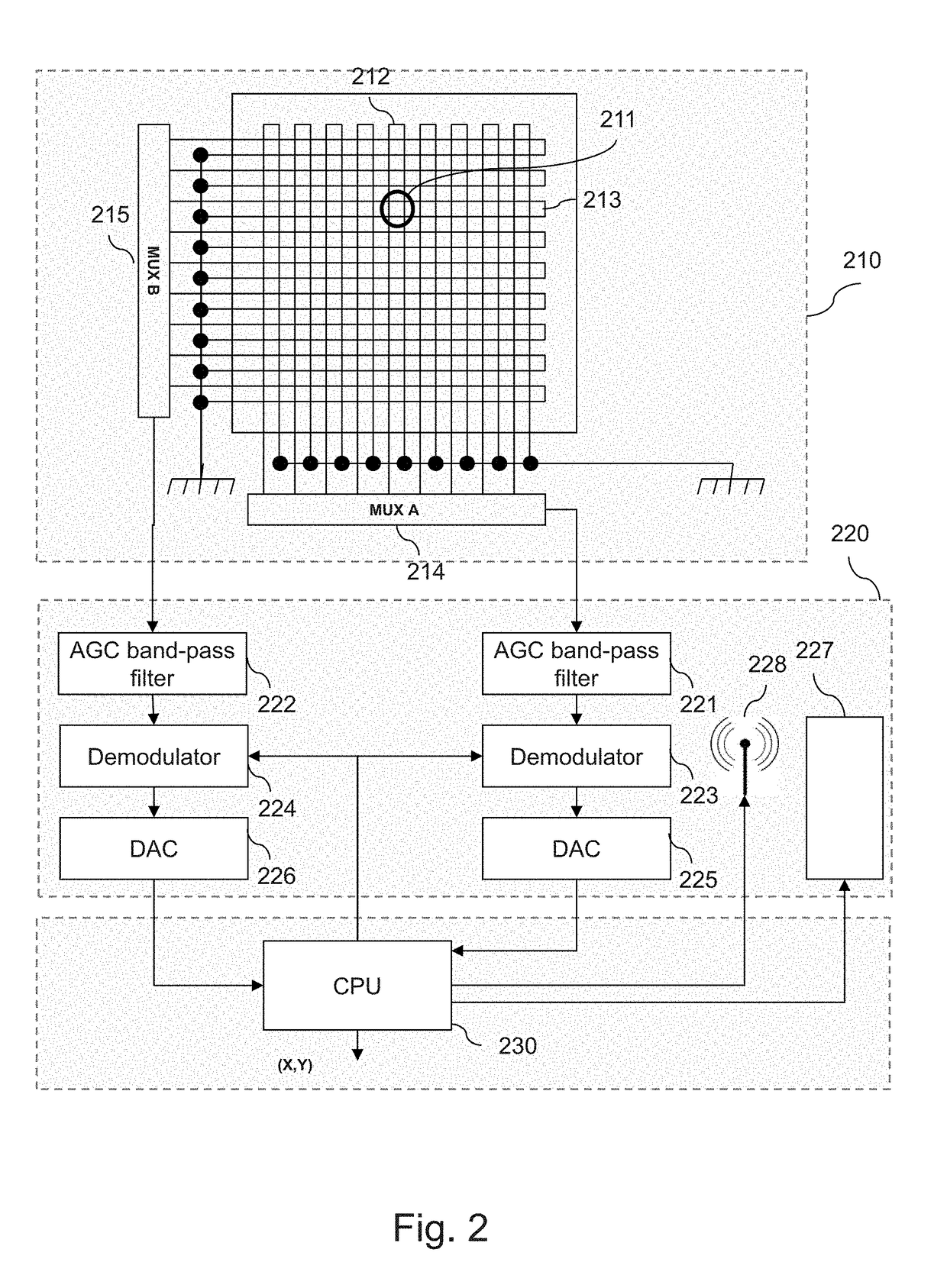Hybrid mobile entity, method and device for interfacing a plurality of hybrid mobile entities with a computer system, and a set for a virtual or augmented reality system
a mobile entity and computer system technology, applied in the field of smart floors, can solve the problems of large errors in the measurement of inertial measurement units, inability to adapt to applications whose duration exceeds a few minutes or even a few seconds, and the operation diverges from the ideal equation, so as to achieve the effect of easy selection of a particular location module and increasing the size of the area
- Summary
- Abstract
- Description
- Claims
- Application Information
AI Technical Summary
Benefits of technology
Problems solved by technology
Method used
Image
Examples
first embodiment
[0090] the hybrid computation is carried out at the location of the detection surface. In this embodiment, movement data measured by the inertial measurement unit are directly transmitted to the detection surface via the communication means. A new position information item is then computed by the detection surface from those movement data and from a position information item computed previously.
second embodiment
[0091] the hybrid computation is carried out at the hybrid mobile entity. In this embodiment, the detection surface sends a previously computed position information item to the hybrid mobile entity. This position information item was typically computed from an electromagnetic signal received from the location module when it was within the detection range of the detection surface. This is for example the last position computed before the hybrid mobile entity leaves the range of the detection surface. The hybrid mobile entity then computes a new position information item using the received position information item and movement data measured by the inertial measurement unit. This hybrid position is then transmitted via the communication means provided on the hybrid mobile entity.
[0092]Thus, the movement data obtained by virtue of the autonomous operation of the inertial measurement unit enable the position tracking of the hybrid mobile entity, even when the location module that it inc...
PUM
 Login to View More
Login to View More Abstract
Description
Claims
Application Information
 Login to View More
Login to View More - R&D
- Intellectual Property
- Life Sciences
- Materials
- Tech Scout
- Unparalleled Data Quality
- Higher Quality Content
- 60% Fewer Hallucinations
Browse by: Latest US Patents, China's latest patents, Technical Efficacy Thesaurus, Application Domain, Technology Topic, Popular Technical Reports.
© 2025 PatSnap. All rights reserved.Legal|Privacy policy|Modern Slavery Act Transparency Statement|Sitemap|About US| Contact US: help@patsnap.com



